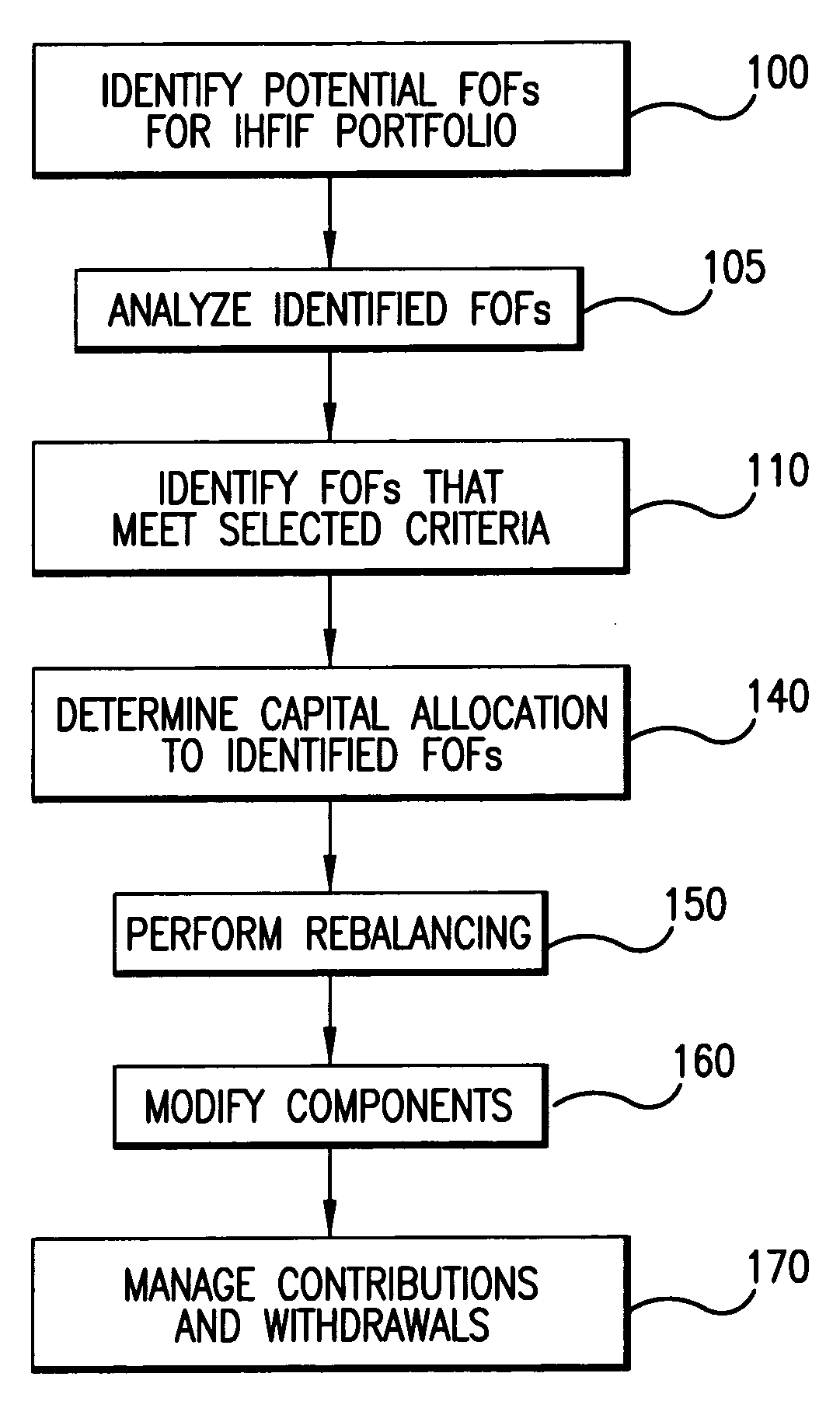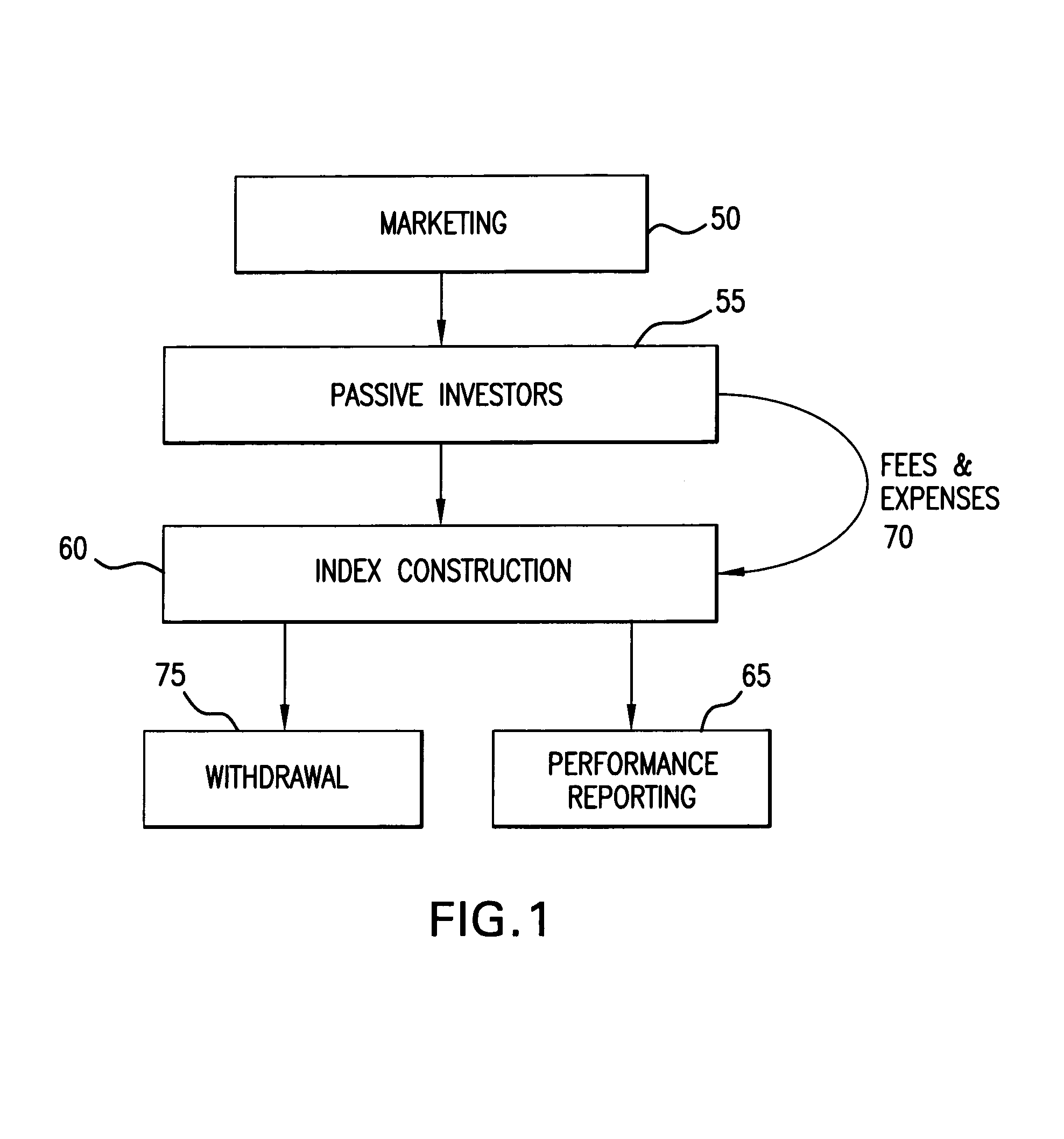Method and system for creating and operating an investable hedge fund index fund
a technology of index funds and hedge funds, applied in the field of methods and systems for creating and operating index funds, can solve the problems of hedge fund liquidity restrictions, hedge fund advertising restrictions, and the public may not be able to learn about either, and achieve the effect of reducing biases
- Summary
- Abstract
- Description
- Claims
- Application Information
AI Technical Summary
Benefits of technology
Problems solved by technology
Method used
Image
Examples
Embodiment Construction
[0056]An Investable Hedge Fund Index (IHFIF) of the present invention preferably works similarly, on an operational level, to a mutual fund. Investors have the opportunity to contribute and withdraw capital on a periodic basis, the capital is invested in a defined strategy, the fund administrator calculates a net asset value (NAV), and accrued fees and expenses are deducted from the asset value. The preferred IHFIF differs from a mutual fund at least in frequency of openings for contributions and withdrawals (e.g., quarterly as opposed to daily for mutual funds), and investment strategy (e.g., investing in a portfolio of FOFs as opposed to a portfolio of stocks or bonds).
[0057]Major steps of a preferred investment method are illustrated in FIG. 1. Step 50 is a marketing step, wherein funds are solicited from potential investors. Through direct marketing, outsourced marketing, and / or a distribution joint venture, an administrator of a preferred IHFIF identifies investors for the inde...
PUM
 Login to View More
Login to View More Abstract
Description
Claims
Application Information
 Login to View More
Login to View More - R&D
- Intellectual Property
- Life Sciences
- Materials
- Tech Scout
- Unparalleled Data Quality
- Higher Quality Content
- 60% Fewer Hallucinations
Browse by: Latest US Patents, China's latest patents, Technical Efficacy Thesaurus, Application Domain, Technology Topic, Popular Technical Reports.
© 2025 PatSnap. All rights reserved.Legal|Privacy policy|Modern Slavery Act Transparency Statement|Sitemap|About US| Contact US: help@patsnap.com



